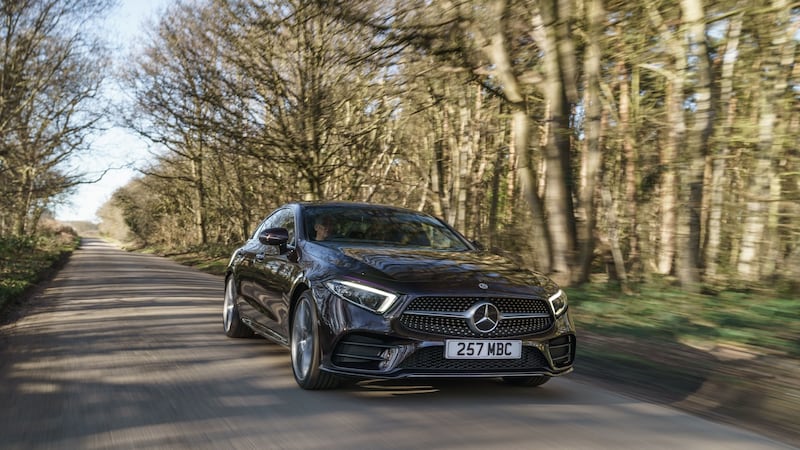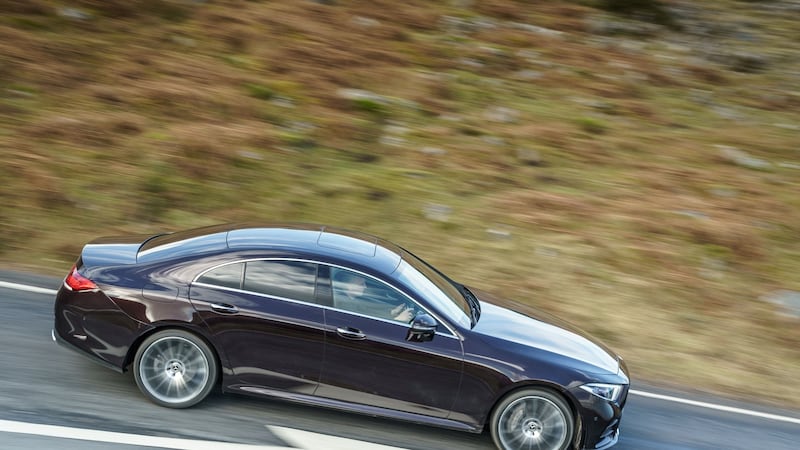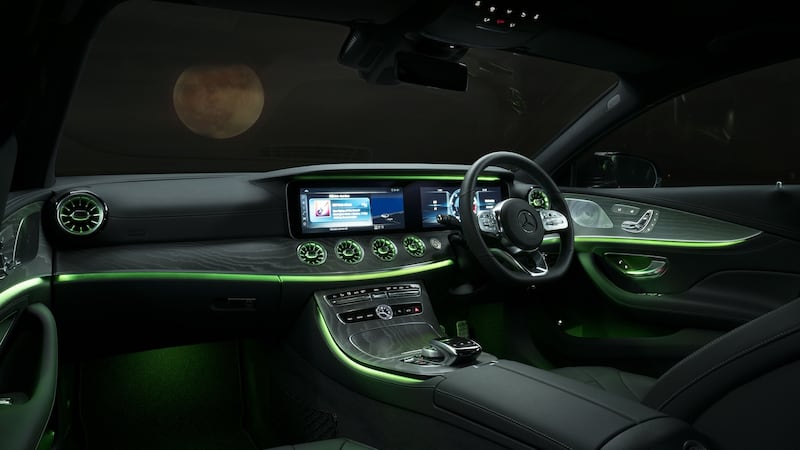Back in 2004, when Mercedes launched the first-generation CLS, the car was referred to within the halls of Stuttgart as "The Jaguar Fighter". Not that Mercedes needed to steal sales from Jaguar, exactly.
Then as now, Jaguar’s sales lagged behind those of Mercedes, but the idea was not conquest, but inspiration – Mercedes just fancied making a car that had the slinky, smooth, sexy qualities of a Jag.
That first-gen CLS hit the bullseye in terms of how it drove, and in terms of how its cabin looked – the vast sweep of wood veneer that made up the dashboard was all but a ripoff of Jaguar’s interior designs – but not perhaps in how the exterior looked.
The first CLS was striking, certainly, but with the distinctive banana-curve of its lower panels, it did from some angles look as if it had already been crashed. Mercedes followed that version up with a second CLS that was more conventionally good looking, but which had an awkward “pontoon” line in the rear arches, meant to reference classic Mercs of the 1950s.

That is most definitely not the case for this, the third generation of CLS. This is a truly gorgeous machine, looking somewhat like the love-child of Brad Pitt and an E-Class saloon. In profile, shorn of the banana effect of the original, it's long and lean and has faint hints of American muscle car about it, and when you open the boot lid, you notice the utterly gorgeous way that the rear pillar melts into the rear wing and bumper and then you're falling hopelessly in love again.
Mercedes has updated the CLS for 2022, but honestly you’d be hard-pressed to notice from the outside. Clearly, someone in Stuttgart realised that tinkering with handsomeness usually doesn’t go well, so they left well enough alone and treated the CLS to some detail changes to the front and rear bumpers, and a new grille which, when you get up close to it, you realise that the mesh pattern is actually made up of lots of tiny Mercedes three-pointed stars.

Under the skin, there are some changes, such as a new 265hp 2.0-litre four-cylinder 300d diesel engine that uses a 48-volt mild-hybrid system to trim its emissions and boost its fuel economy. Sadly, we weren’t given that version to test – instead we’re here driving the plain old 220d, which does without the mild-hybrid setup. Disappointing? Certainly, but there are some compensations, which we’ll come to in a moment.
Inside, the CLS is pretty much as gorgeous as it is on the outside. The cabin is largely drawn from the E-Class saloon, but that's no penalty as the styling and quality levels of the E-Class are enough to give a bloody nose to any rival from BMW, Audi, Lexus, or Jaguar. You get the original MBUX digital dashboard, with its twin, conjoined 12.3-inch screens.
Touchscreen systems
While this tech has recently been superseded by new touchscreen systems in the C-Class and S-Class (not to mention the electric EQS’s vast “Hyperscreen”), it’s still a brilliant setup to use, with crisp, clear, colourful displays and a reasonably sensible menu layout. The only demerit is that the trackpad controller remains fiddly, and the central screen is a little too far away when you’re using it as a touchscreen.
Our test car had lashings of grey, open-pore Ash wood on the dash, and €412 worth of “Macchiato Beige” leather, a combination that looks, perhaps, a little too decadent (and you wouldn’t want to drop any chocolate on it…) but which is certainly more bright and welcoming than the default black.

The front seats are a little less than perfect, though – we noticed that leg-ache crept in on long journeys unless you had the seat adjusted very carefully into the right position. Space in the back is surprisingly good for a car that purports to be a coupe (it’s not, let’s be clear – coupes have two doors, and that’s the tiny hill I’ll die on) and the boot is generous, if perhaps a shade shallow.
Taken in terms of pure engineering, the diesel engine is really rather good. Diesel clatter is well-isolated, and while acceleration and outright performance aren’t anything special, a 7.5 seconds 0-100km/h time is certainly respectable. Better still, fuel economy is exceptionally good.
This big, luxurious, four-door ambles past the 5.5-litres per 100km benchmark without even trying, and I suspect that gentle driving on a long route might see you even hit as good as 4.5-litres per 100km. CO2 emissions stand at 148g/km, but while quite reasonable, that figure does kind of remind you that this is a car lacking utterly in electrification, and that the slinky, long-ranged, all-electric new EQE is imminent…
It's a car that feels at first meeting as if it's not going to be all that exciting to drive, but which reveals layer after layer of ever-increasing ability
Dynamically, though, the CLS has few flaws. The ride quality on those big 19-inch alloy wheels can get a touch lumpy around town, but it’s rarely less than well-isolated. The trade-off for those occasional lumps is a distinct turn of athleticism at higher speeds, and for a big machine the CLS deports itself well on twisty roads.
In the grand Mercedes tradition, it’s a car that feels at first meeting as if it’s not going to be all that exciting to drive, but which reveals layer after layer of ever-increasing ability (and agility) the deeper you probe, and the harder the handling questions you ask of it. Refinement is excellent too, aside from a slight excess of wind rush around the tops of the frameless side glass.
You could, with the flick of a finger, dismiss the CLS as irrelevant. There’s no electric version. It’s a more expensive version of an E-Class (same chassis underneath, but our test car had an €85,296 price tag) with less space and slightly reduced practicality. Oh, and you can have an 80 per cent scale replica, for much less money, in the shape of the compact, front-drive CLA.
None of which matters much when you once again clap eyes on the CLS. Something this handsome deserves your admiration, merely for existing.
Lowdown: Mercedes-Benz CLS 220d
Power: 2.0-litre turbo diesel engine developing 194hp and 400Nm of torque, driving a nine-speed automatic transmission with rear-wheel drive.
CO2 emissions (annual motor tax) 148g/km (€270).
Fuel consumption: 5.5-litres/100km 51.3mpg).
0-100km/h 7.6sec.
Price: €85,296 as tested; CLS starts at €83,090.
Our rating 3/5.
Verdict: Soothing, handsome express but needs electric power for relevance.














